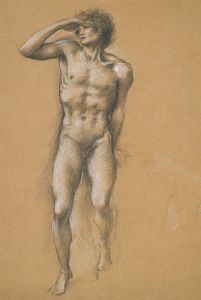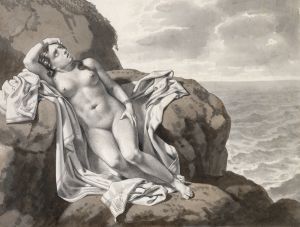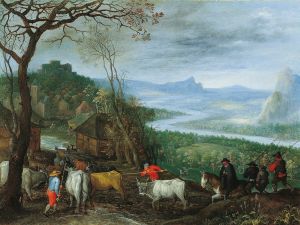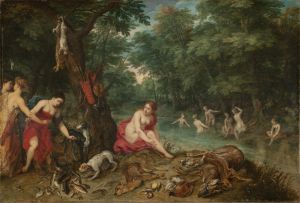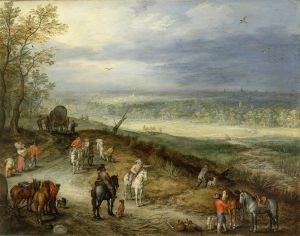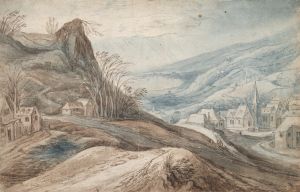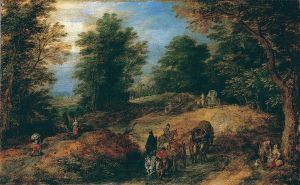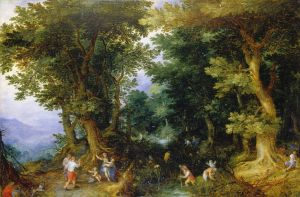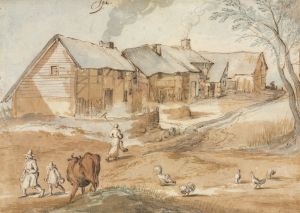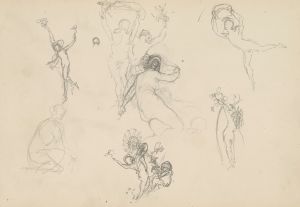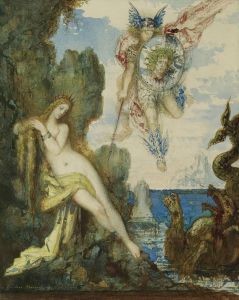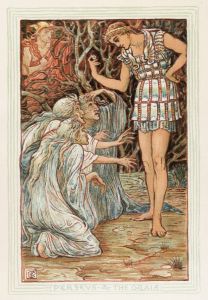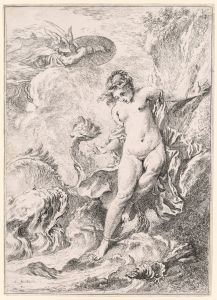
Perseus And Andromeda
A hand-painted replica of Jan Brueghel The Elder’s masterpiece Perseus And Andromeda, meticulously crafted by professional artists to capture the true essence of the original. Each piece is created with museum-quality canvas and rare mineral pigments, carefully painted by experienced artists with delicate brushstrokes and rich, layered colors to perfectly recreate the texture of the original artwork. Unlike machine-printed reproductions, this hand-painted version brings the painting to life, infused with the artist’s emotions and skill in every stroke. Whether for personal collection or home decoration, it instantly elevates the artistic atmosphere of any space.
Jan Brueghel the Elder, a prominent Flemish painter of the late 16th and early 17th centuries, is known for his detailed and imaginative works, often depicting mythological, biblical, and allegorical themes. Among his extensive oeuvre is the painting Perseus and Andromeda, which illustrates the classical mythological story of the hero Perseus rescuing Andromeda from a sea monster.
The painting is based on the ancient Greek myth as recounted in Ovid's Metamorphoses. According to the myth, Andromeda, the daughter of King Cepheus and Queen Cassiopeia, was chained to a rock as a sacrifice to appease a sea monster sent by Poseidon. Perseus, having recently slain the Gorgon Medusa, arrives on the scene and saves Andromeda by defeating the monster, ultimately marrying her.
Brueghel's Perseus and Andromeda is characteristic of his style, which often combines intricate detail with fantastical landscapes. The painting features a richly detailed setting, with lush vegetation, dramatic skies, and a dynamic composition that draws the viewer's eye toward the central action. The figures of Perseus, Andromeda, and the sea monster are rendered with precision, reflecting Brueghel's skill in depicting both human forms and imaginative creatures. The work also demonstrates Brueghel's mastery of color and texture, with vibrant tones and meticulous attention to naturalistic details.
This painting is significant not only for its artistic qualities but also for its place within the broader context of Flemish art during the Baroque period. Jan Brueghel the Elder was part of a prominent artistic family, being the son of Pieter Bruegel the Elder and the father of Jan Brueghel the Younger. His collaborations with other artists, such as Peter Paul Rubens, further highlight his importance in the artistic circles of his time.
The exact date of creation for Perseus and Andromeda is not definitively documented, but it is generally attributed to Brueghel's mature period, when he was producing some of his most accomplished works. The painting is housed in a museum collection, though specific details about its current location and provenance may vary depending on the source.
As with many works of art from this period, Perseus and Andromeda reflects the cultural and intellectual currents of the time, including the Renaissance fascination with classical mythology and the natural world. It stands as a testament to Jan Brueghel the Elder's artistic legacy and his ability to bring mythological narratives to life through his distinctive visual language.





